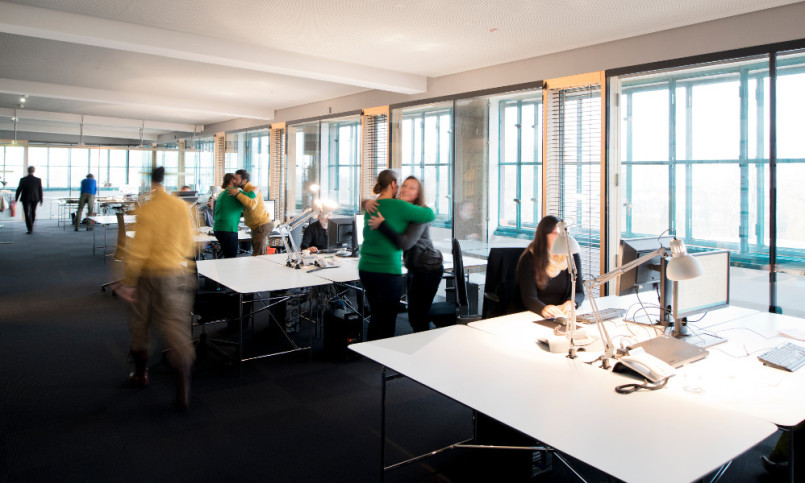What you always wanted to know about the Tabakfabrik Linz – from pioneers to finances: We put together the most important questions and answers for you.
1. What is the Tabakfabrik Linz?
The big smoke: Where once 8.000 cigarettes churned out per minute and machine, creative sparks are lit. The erstwhile tobacco plant of Austria Tabak, former Austrian tobacco monopole, emerges as an urban centre for cultural and creative industries. In its redesign the revitalized industrial building, hub for contemporary technologies and creative industries, does not define itself as a conventional museum or venue. Rather, it is a workbench, stage, laboratory, rehearsal room, center for creative collaboration and ultimately, fabricating urban quarter – one of a kind.
The development of the Tabakfabrik affects the profile of the Upper Austrian capital Linz strongly. More than 210.000 residents and as many jobs: a unique feature in the international competition of so-called “Second Cities”. Where “Smart” cigarets were once produced, a “smart factory” of creative industries is now flourishing. Studies prove the relevance of the Tabakfabrik Linz in the “Smart Cities” context.
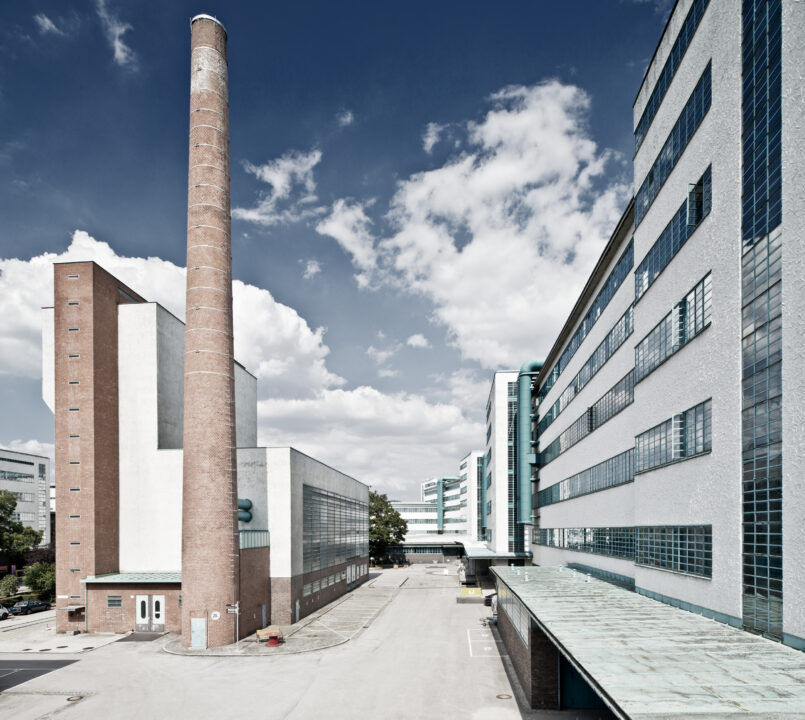
Tabakfabrik Linz © Archipicture
The landmarked industrial plant, designed by Peter Behrens and Alexander Popp, serves as a projection screen for the cultural and economical future of Linz. As the first Austrian steel frame construction in the New Objectivity-(Neue Sachlichkeit)-style, the building is of international significance in architectural history.
Behrens, known as the inventor of Corporate Design, created a total work of art in terms of Radical Functionalism; a roofed area of 70.000 m2. With a passion for detail, he and Popp designed the buildings and furnishings, from coffee mug to colour blends. They considered the human being as the centrepiece, a concept that is strongly exerted in the present development of the “Social Design” of the Tabakfabrik Linz.
A persistent architectural gem
For more than 350 years, the building was a production site, initially of textiles, later of tobacco goods. Established in 1850 as an emergency measure to make use of the bankrupt cloth factory, the Tabakfabrik Linz became a symbol for recovery by transformation. Today’s area was built in stages during the Great Depression in 1929-1935. In 2001, the British Gallaher-group bought the enterprise during a period of privatization; this group itself was sold to „Japan Tobacco International“ in 2007. The Japanese owner decided to shut down business – one reason might have been the tight conditions of the federal monument conservation department, as most parts of the building were listed in the 1980ies.
In 2009, the city of Linz bought the abandoned tobacco plant, including the Danube park stadium, for 17 million Euros. Recreated in a top-down-initiated bottom-up process, the architectural gem now offers space for a variety of contemporary cultural and economical purposes. It is designed as a condensed reflection of a future society, speaking of working and living conditions.
Within the meaning of an autopoietic system, the various sections develop, organize and support themselves on their own terms. The guiding theme is: Clear rules, no barriers. Thereby, the Tabakfabrik acts by four principles: participation, transparency, openness and sustainability. By explicitly encouraging trans-disciplinary cooperation, the social, economic and cultural milieus merge. To that effect the Tabakfabrik Linz defines itself as sum of all its parts, as the first collaborative company.
2. What DID “intermediate use” mean?
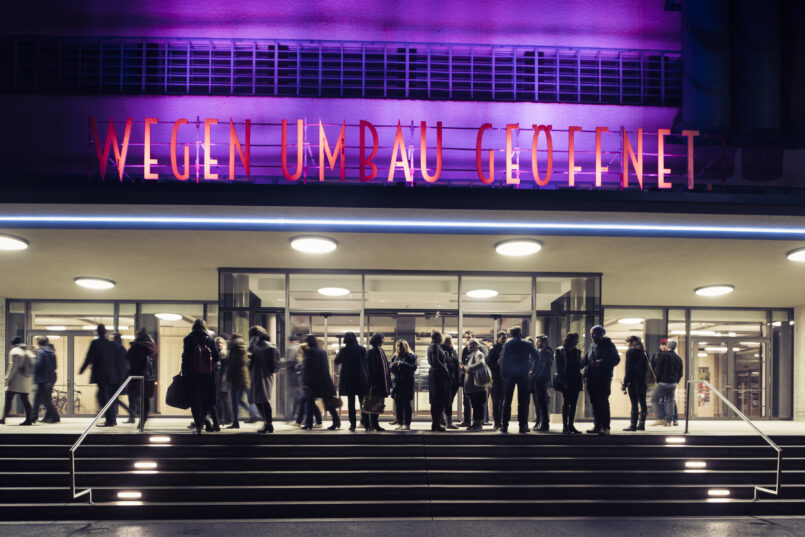
Wegen Umbau geöffnet – Open due to renovation © Sabine Kneidinger
The Tabakfabrik Linz was built in stages during the world crisis. Since 2009 a similar strategy was applied. The reactivation of this gigantic area was coming about gradually; it was “open due to renovation”.
A basic strategy in the course of developing and revitalising the Tabakfabrik Linz was its intermediate use between 2009 and fully utilized rental spaces in 2022. The temporary flexible usage of untapped areas was inevitable for a sustainable and demand-actuated site-design, especially with regard to its dimension.
The potential of the diverse buildings and spaces was explored and prepared for its final utilisation, facilitated early and field-tested quality management, left room for experiments and to stimulate urban life, as a generator for innovation. The intermediate use enhanced the public perception and, as a result, valorized the site. Not least, it represented an important financial backup for the owner and the development of the site.
“Open due to renovation”
For that reason, the intermediate use included various fields, from culture to creative to education. The mode of operation was to host single events as well as long-term tenants. Artists, cultural and social associations, freelancers, educational institutions, advertisers and digital agencies, technology engineers and software developers, architects, designers, media ventures and craftsmen – all of them operated in different spatial structures. They used – and still use – the rooms as studios, event sites, co-working-spaces, offices, lecture halls, practices and workshops.
3. What is so special about its concept?
The Tabakfabrik Linz defines itself as a universal factory of the future, a compression chamber of art and research, science and creative industry, engineering and handicraft, statement and discourse, education and training. At the heart of the new district is the creativity of people. It is a “place zero” where many things begin, initiated by self-ignition effects.
From cigarettes to production palace
In terms of “neo-industrialization”, due to a well-balanced mixture of non-commercial and commercial utilization, the site works as a perpetual motion machine of emerging technologies, handcraft, research and education, art, culture and creative industry. These include profit-oriented private companies as well as voluntary initiatives, government institutions or individuals.
They are dynamic and heterogeneous by nature and form procreative synergies by exchanging generative synergies. Only the diversity of potential use and its preservation guarantee a long-term locational attraction for all social stratums and age ranges, on the contrary to homogenised interests.
The guiding concept of developing a creative, neo-industrial urban quarter offers the potential to further internationalize Linz. It is based on the four pillars of creativity, social issues, work and education.
Promotion of the creative industry
The Tabakfabrik Linz is a hub for the creative industries and a center for digitalization. One person companies and businesses in the fields of architecture, design, arts and crafts, media or advertising are producing on site. By specifically promoting this growth sector and bundling it on-site, Linz catches up with an international trend: the creation of value and employment in the creative industry is continuously rising, despite any economic crisis.
For that reason, the network platform “Creative Region Linz & Upper Austria” took up residence in an early stage of development. The more attractive the area is for creative businesses, the bigger the Tabakfabrik’s financial tolerance to promote cultural initiatives and create open spaces for artists will be.
Popular event location
Due to its unconventional and spectacular room layout, the Tabakfabrik Linz has already evolved into a sought-after exhibition space for international shows and potential box office successes. These exhibitions are an effective instrument for democratic knowledge transfer; their low-threshold approach appeals to broad sections of the population. They have passed Linz before due to missing a fitting accommodation. Now, there have been several blockbuster exhibitions at Tabakfabrik in the past years, ranging from “Titanic” over “Körperwelten” and “Tutenchamun” to “The Mystery of Banksy – A Genius Mind”, attracting hundreds of thousands of visitors.
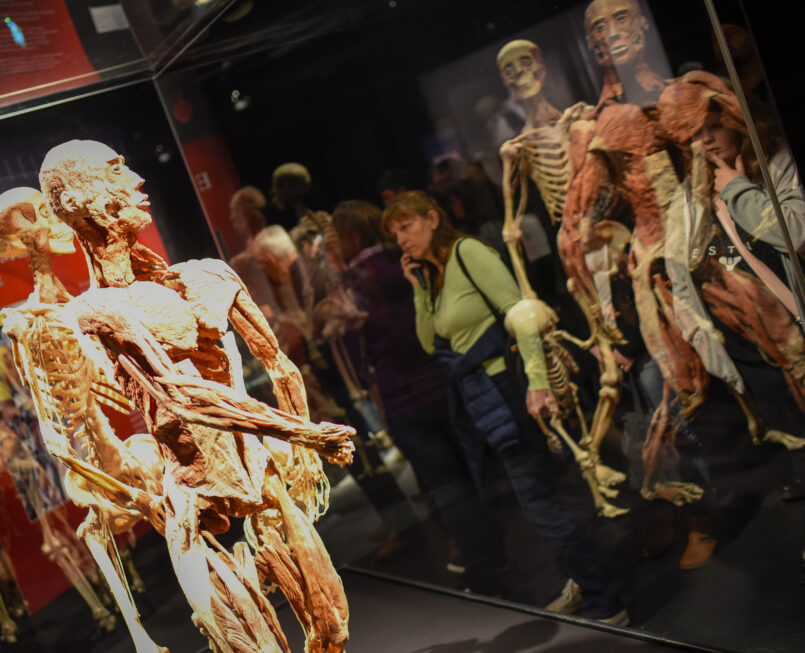
Exhibition Koerperwelten in Linz | Gunther von Hagens’ KÖRPERWELTEN, Institut für Plastination, Heidelberg, www.koerperwelten.de
The Tabakfabrik rents spaces to external organisers – it undertakes autonomous events only in cooperation, for example with Ars Electronica, Brucknerhaus, University of Arts Linz, Johannes Kepler University Linz, voestalpine, Linz AG, etc. The scope ranges from classic to pop to subculture. These intercultural projects and events in fields as cutting-edge-technologies, creative industries, politics, health, sociology, science or education, recreational culture as well as the commercial field, if nothing else, raise the money needed for the promotion and support of artistic projects.
Congresses, lectures, workshops, readings, trade shows, fairs, pop-up-stores, markets, product presentations, photo shootings, movie screenings, trainings, performances, festivals and corporate events cover the needs and categories of urban life according to the overall concept of the Tabakfabrik as a multipurpose quarter.
In principle, the orientation of the Tabakfabrik correlates to most of the goals of the development program EU 2020, which enforces “intelligent, sustainable and inclusive growth” by means of new technologies, education and creativity.
4. what IS THE IDEA BEHIND THE SELECTION OF VISIONARY FORCES?
According to the formula „selected visionary forces“, individuals, small businesses and companies in the field of art and research, culture and creative industries, engineering and craftsmanship have taken up residence. They can identify with the overall vision and, thanks to their different skills, make essential contributions to the further development of the Tabakfabrik.
After intense talks, in which the needs of every interested party as well as their potential participation on the site-design were understood, milieus that benefit from each other were created. In more specific terms, by the creation of optimal spaces, networking and frame conditions as well as the positioning of these businesses in a certain topology, a production chain evolved: Art and research serve as generators for innovations, novel products and services, which are then studied and produced by creative industries. Craftsmen and industry produce these goods, which are displayed and conveyed in showrooms.
Instead of a premature constraint of potential usage, it was necessary to create as many types of utilization on site as possible, especially in the first revitalization phase. Thus, society’s requests and aspirations were not only positioned, but also put to test.
5. Who is WORKING in the Tabakfabrik?
The Tabakfabrik is home to about 250 organizations variating in size that offer about 2,900 workplaces . These organizations operate in different sectors– they are artists, start-ups, social societies und programs, advertising and media agencies, business angels, founders, investors, students, technology and software developers, architects, designers, manufacturers and many more. They use the Tabakfabrik as their office, studio, co-working-space, lecture hall, workshop, meeting room and event location.
The Tabakfabrik Linz is a laboratory for its pioneers, in which the contemporary principle of producing in networks and loose communication structures comes alive. The potential of the CCI (cultural and creative industries) is revealed remarkably by the digital sector, which merges genres like film, video, music or animation.
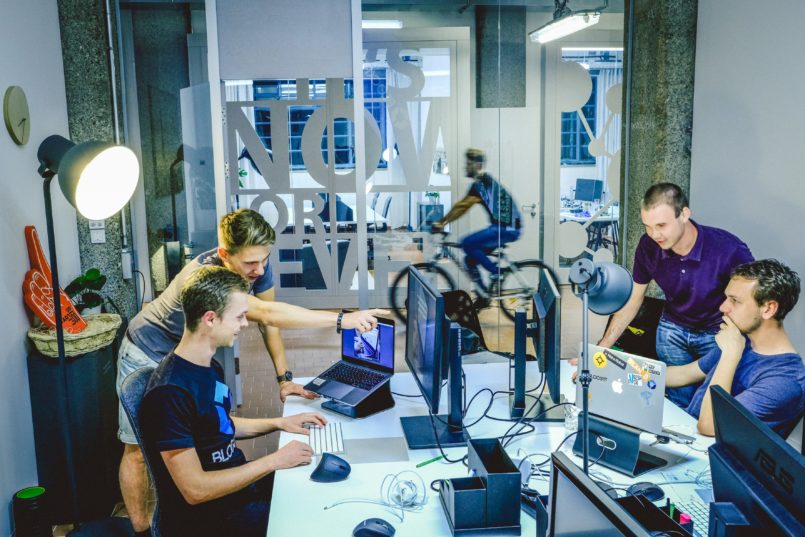
Among the pioneers of the Tabakfabrik are:
- Ars Electronica Solutions: media lab and business division of Ars Electronica Linz GmbH
- Netural: digital agency
- Lunik2: advertising and marketing agency
- Smarter Ecommerce: offers industry-leading paid search solutions
- Creative Region Linz & Upper Austria: organization for support, networking and consulting of creatives
- University of Art and Design Linz: degree programme “Fashion & Technology”
- GRAND GARAGE: maker space
- Kleboth & Dollnig: architects
- B7 Arbeit und Leben and B7 Fahrradzentrum: Social organization for professional or personal challenges and associated bicycle shop
- Haratech: plastic engineering
6. How is the Tabakfabrik located in its urban surrounding – and how is it perceived internationally?
As a pristine urban hub the Tabakfabrik has a distinctive position in the fabric of Linz. It bridges a gap between the centre, the adjoining cultural and recreational space of the riverbank and the continuously developing dockland area and is an integral part of the Digital Mile.
Its progress accompanies the basic urban planning strategy to expand the inner city towards the east, alongside the industrial zone of the docks and the area of voestalpine.
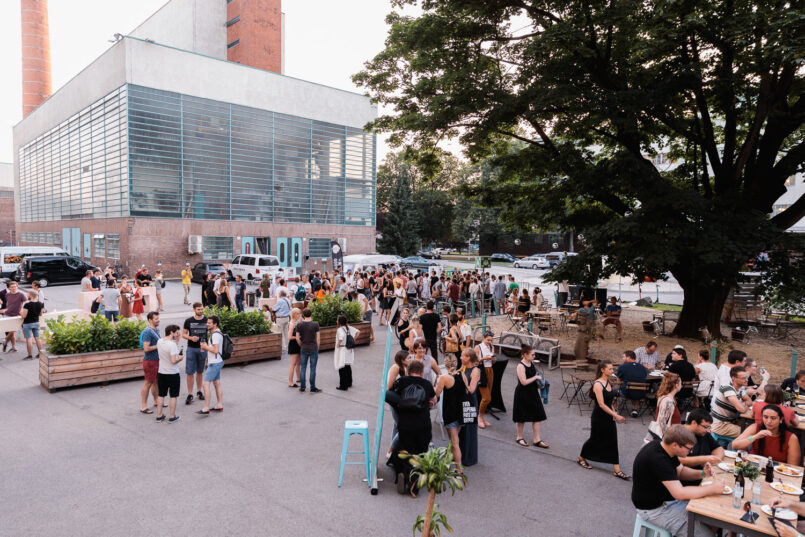
vog.photo
International best practice example
Harald Katzmair, the founder of the Vienna research institute FASresearch, describes the Tabakfabrik Linz as “one of the most exciting and significant future projects currently underway in Austria. – And as a pioneer in the development of a new industrial ecology that addresses the question of how we can plan innovation processes in the future in a world of Industry 4.0.”
7. What about the money?
From 2009 to 2016, Tabakfabrik GmbH received a grant from the city of Linz for the development and maintenance of the listed site, the maximum amount of which was decided annually by the local council. In 2017, a paradigm shift followed: Tabakfabrik GmbH became a profit-oriented company. The annual loss transfer was stopped by a resolution of the city council; instead, appropriate equity capital was provided. For the renovation, a total of around EUR 72 million was invested by TFL GmbH in the tobacco factory between 2016 and 2022, 70% of which was through borrowed capital.
To repay the loans, Tabakfabrik GmbH uses funds from its ongoing business activities. The income from ongoing business activities covers the expenses for ongoing operations, use and maintenance of the extensive area. In addition, Tabakfabrik GmbH pays rent for the area to the city of Linz. In 2022, Tabakfabrik GmbH recorded profits for the first time, which of course are reinvested in the Tabakfabrik.
8. What does „collaborative Group of Companies“ mean?
The principle Tabakfabrik
The operation principle of the Tabakfabrik is a fusion of various aspects: On the one hand it functions like the Swiss horologist city La Chaux-de-Fonds, whose streets are structured innately like a factory. On the other hand it works like a corporate headquarter, whose production chain is formed and built like a closed loop, inspired by local artist and architect Herbert Bayer. This is exactly how Apple’s headquarters, which opened in 2017, works.
The Tabakfabrik is an interdisciplinary production facility, a collaborative group of companies with clear processes, in which as many different specialist fields and initiatives as possible cooperate and add to each other. Due to the size of the property and the circumjacent city, the creation of a monoculture would neither be sensible nor possible. Furthermore, only gradual designing and siting will guarantee organic and sustainable growth.
By the Tabakfabrik’s orientation across disciplines as a modern manufacture it can respond flexibly to social requirements. Peter Behrens and Alexander Popp already knew that freedom for experiments is necessary in order to be able to cope with the changing times. They implemented this knowledge during the planning of the factory by designing big, adjustable, open spaces.
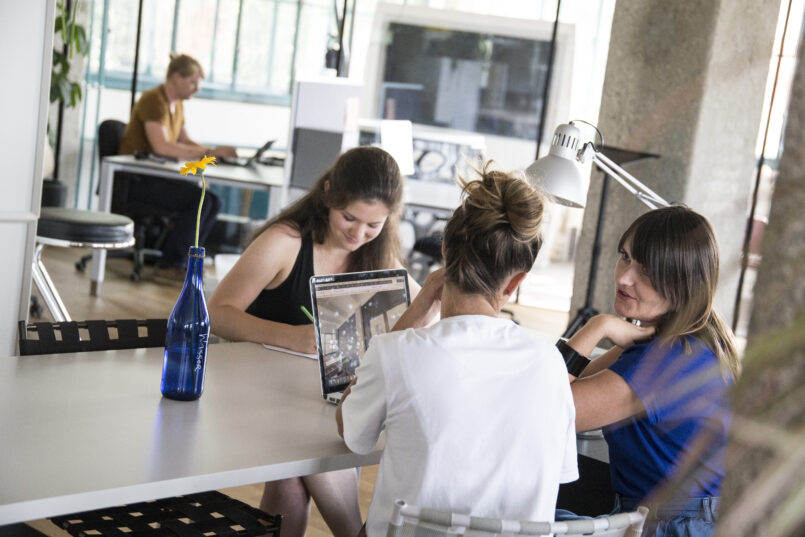
© Elisabeth Fehkuehrer
The working environment changed drastically in the past decades. Nowadays we work in different locations, at different times, as one-person companies, in changing team constellations and without permanent employment.
These assignments need new, flexible, cross-linked spaces.
The Tabakfabrik, as a collaborative group of companies, stays abreast of the economical structural changes. Exploring ground-breaking collaboration modes is not only an essential part of the concept but will also ensure Linz power in its future competition as an international production site. Just now, providing neo-industrial jobs, which attract highly qualified employees, is a major chance for urban development and indispensable for being equal to competitors.
9. What are the next steps?
In the first stage of development, the site, which has been inaccessible for a long time, has been deliberately highlighted as a spectacular venue in order to increase the awareness level, commitment and broad acceptance of the public as well as to gain important insights into the spatial potential of the premises. As a result, the Tabakfabrik has become a focal point of the city’s cultural life: since 2012, over 2 million guests have attended events there.
In the second transformation phase, the Tabakfabrik changed from an event habitat to a creative biotope by settlement of cultural and creative industries. It transformed from a consumer to a producer venue.
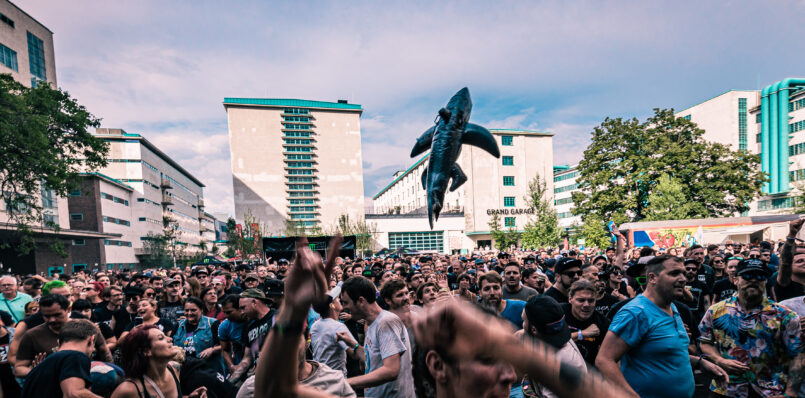
Raphael Sperl @tricky.pics
The new district is developing
10. How can we imagine everyday life in this Futuristic manufacture ?
The Tabakfabrik Linz is visionary not only from an architectural viewpoint, it also defines itself – in spirit of its creators Peter Behrens and Alexander Popp – as a dynamic manufacturing plant, a research centre for visions and the palpable realization of a socio-political or socio-economic model of the future.
Therefore, the Tabakfabrik is not only concerned with the present, but also works on concepts for the year 2040. In this year, the number of inhabitants could have doubled. People will live by different principles.
The job market is turning more and more towards freelance workers. While many consider individual autonomy in labour positively, this autonomy is often dearly paid for by high financial risks and chronic competition pressure. These developments shall be counteracted in the Tabakfabrik.
Inspired by the ideas and concepts of the think tank NANK (New Work – New Culture) around the social philosopher and founder of the so-called New Work movement Frithjof Bergmann, new professional environments for creative micro-enterprises are being created and tested.
The terms “co-working” and “community production” define as collaborative working structures, which enable effective local and international synergies, and promote a decentralized production divided into small sections, by providing high-tech infrastructure and sharing resources. Cooperation instead of competition shall determine everyday life.

© Sabine Kneidinger
Tabakfabrik and autopoiesis
Systems organize, develop and transform within the scope of a certain intrinsic logic. They require different elements of which they consist and cross-link to different structures. The term “autopoiesis” is used when these elements and structures are produced and reproduced by the system itself. An autopoietic system creates and sustains itself on its own terms.
However, the concept of autopoiesis does not mean the renunciation of contact with the outside world, with the environment. Interaction is significant to the system, but it doesn’t dictate the system. The system itself regulates the degree and form of dependency or independency on its surrounding. In this sense, the system maintains its relative autonomy, acts on the basis of its own logic and is therefore not arbitrarily controllable from the outside.
With regard to the set-up of social systems the term “contingency” is prominent. There is the prevailing phenomenon that only a few relations come about and give distinction to the system, not only in the relations with its environment but also in-between the elements.
The relationships between the elements do not follow any fixed rule; there are neither necessary nor impossible connections: they are contingent. The result is that systems with similar determining elements nevertheless organize themselves very differently.
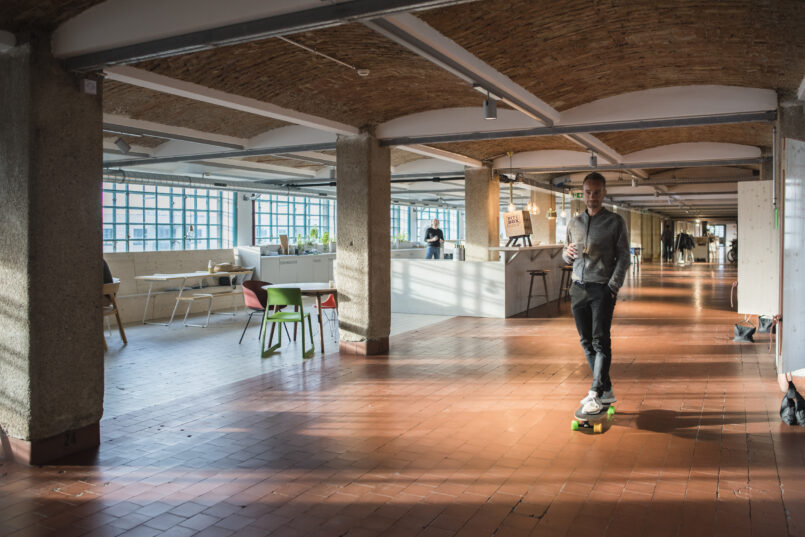
SMEC © Sabine Kneidinger
On its own terms: The model for the development process of the Tabakfabrik
The concept 4020 Linz – Tabakfabrik 2040: Strategy for the further development of the Tabakfabrik Linz names four pillars as basic elements of the new district: creativity, social affairs, work and education. These elements form a structural guideline for the content development of the tobacco factory; added to this is a contemporary understanding of public space.
This term does not refer to publically subsidised space, but aims at the momentum of adopting this space for social, cultural and political matters. In detail, the concept itself turns into a matter of development and differentiation in the overall process.
The responsible political agencies and the management of the Tabakfabrik are main players working on that concept, but the four activity zones are involved in the development work as well. From a perspective of system theory, all players – political representatives, management and pioneers – form subsystems of an overall system and develop in relative autonomy.
With regard to the process of internal development and the interactions between subsystems, autopoiesis and self-organization are important factors.
The benefit of seeing the development of the Tabakfabrik as autopoietic is the realistic and innovative management and development strategy, which accrues from this viewpoint. The traditional approach would be to view the Tabakfabrik as a lifeless object, being at the mercy of interventions from the outside.
A linear design process collects ideas, draws up plans and implements changes. Planners often assume that they know all the factors – this assumption is usually unrealistic. Learning processes in which new experiences are gained and recursively incorporated into the overall process through corrective interventions are not provided for. This fuels the risk of planning that ignores internal and external conditions.
An approach, which is inspired by system theory, however, acknowledges the organisation and development of players by idiosyncratic logics in their particular capacity and sector,
In contrast, a systems theory-inspired approach recognizes that the actors – in their respective functions and areas – organize and develop according to their own specific logic, within the meaning of subsystems in an overall system.
Whichever relationship the players establish within or in-between the various divisions is relinquished to the relative autonomy of the subsystems. This creates space for a variety of contingent alliances between all actors involved. This approach is much more realistic because it recognizes the moment of contingency in all development processes. It includes correspondent phases of reflection and reorganization in the design process.
An approach in terms of system theory also uses the specific creative potential, which is generated when systems are given space for self-organisation and the approval of the productive moment of contingency.
The regulation of the overall system is not abandoned: On the one hand it focuses on the implementation of a political, economical and technical environment to which the subsystems are geared to, on the other hand it makes the steering players perceiving themselves as a part of the overall system, who in fact hold a certain position of power but in this position are subject to mutual reactions and dependency from the subsystems. This sense of self usually conveys a socially briefed, capable and reflective leadership style.
